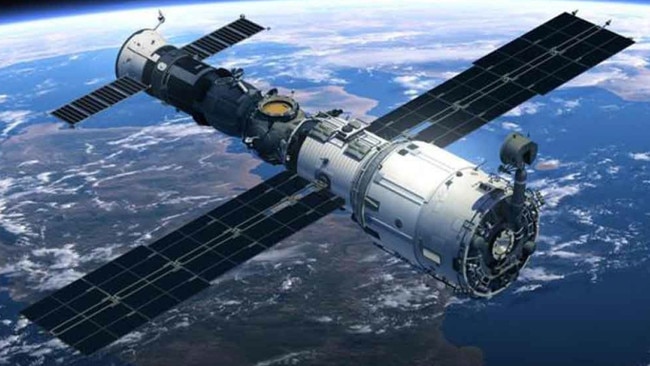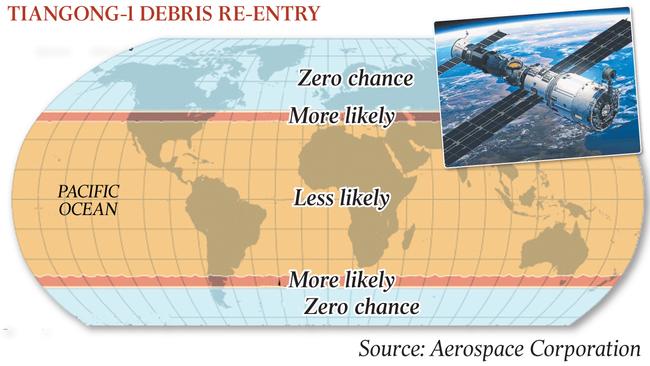Chinese space station Tiangong-1 is out of control and falling back to Earth
Sky Lab fell on Western Australia in 1979. Which state is now in the firing line when the 8-tonne Tiangong-1 falls from space?

Its name means “heavenly palace”. But Tiangong-1, an eight-tonne Chinese space station launched in 2011, will not remain in the heavens much longer. After visits from crews in 2012 and 2013, Tiangong-1’s mission officially ended in March 2016. A few months later China’s space agency appeared to confirm what amateur skywatchers already suspected, that it had lost control of the station. It said it expected Tiangong-1 to fall from the sky some time late in 2017.
In fact, the station is still up there, orbiting at an average height of 250km. But the inaccuracy of the agency’s prediction is understandable. At low altitudes (anything under about 2000km), orbital mechanics is a surprisingly imprecise science. Earth’s thin outer atmosphere exerts a measurable drag on anything in such an orbit, and this drag means that, without regular boosts, that object will fall out of orbit eventually. The drag itself, however, is not constant. So exactly when this fiery fall will happen is hard to say in advance.
Changes in the sun’s activity, for example, affect the density of the outer atmosphere, speeding up or slowing down an orbit’s decay. The interplay between Earth’s magnetic field and the solar wind has similar effects. With Tiangong-1, though, the end is close enough for educated guesses to be made. The Aerospace Corporation, an American consultancy, reckons that April 3 is the most likely day. The European Space Agency expects it to happen sometime between March 29 and April 9.

As space junk goes, Tiangong-1 is big, but not especially so (the spent second stage of a Russian Zenit rocket, which is roughly the same size, re-entered the atmosphere over Peru in January). There is, though, a good chance some parts of it will survive their descent. Without knowing when the station will fall, it is impossible to say where those pieces might land, though the characteristics of the station’s orbit mean it will be between latitudes 43° north (that of northern Spain) and 43° south (which passes by Tasmania). Wherever they land, the pieces will come down in a long, narrow line, with the densest parts of the station travelling farthest.
On the face of it, the chance of any of that debris hitting someone is low. For one thing, the world is mostly ocean. For another, even on land people are small and scarce compared with the available area. Nor is anyone known to have been injured by re-entering debris since the space age began (though someone has been hit but not hurt). The risk of such injury cannot, however, be ruled out — and the chance of damage to property, which occupies a larger fraction of Earth’s surface than people do, is proportionately higher.
The way to eliminate such risks is controlled re-entry. As Jonathan McDowell, an astrophysicist at Harvard University, observes, that is becoming more common. About 40 per cent of rocket stages that end up in space, he says, can now restart their own engines and alter their orbits. Most satellites bigger than about five tonnes likewise come fitted with motors of their own. That allows their controllers to aim them more precisely when the time comes to dispose of them.
Tiangong-1 itself was probably supposed to have been guided into the remote southern Pacific, the dumping site of choice for superannuated space hardware, in 2013. But, says McDowell, the station was kept on as an insurance plan in case the launch of its successor, Tiangong-2, failed. In the event, Tiangong-2 reached orbit in 2016 without incident. Tiangong-1, meanwhile, stopped working — leaving its fate in the hands of the space-weather gods rather than its controllers on the ground.


